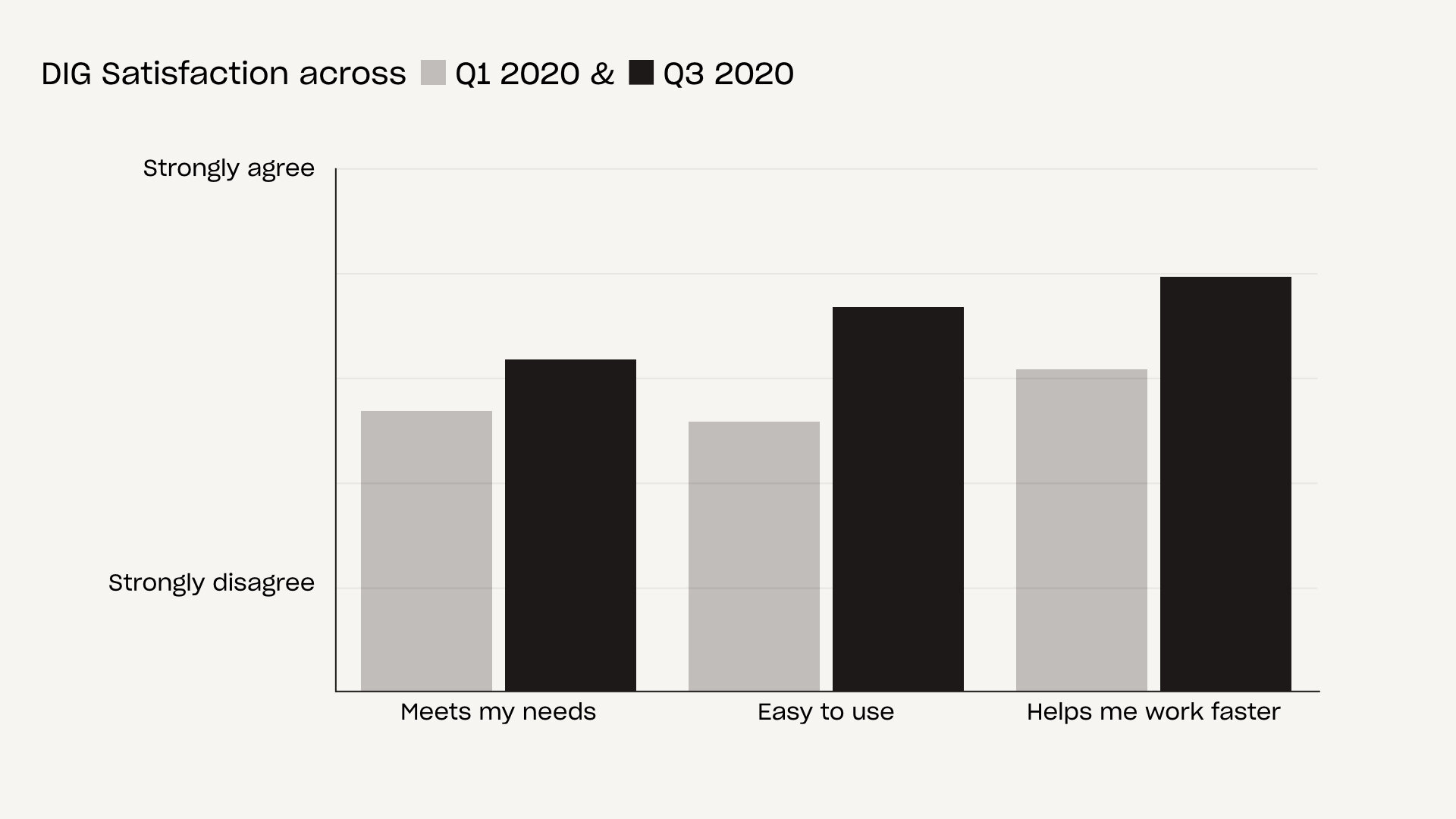Case study
Leading design systems
Coaching a cross-functional design systems team requires understanding the end user, empathy for the internal user, and dedication to the craft of user interfaces.
Background
I have been the consistent leader for the Design systems team since joining Dropbox in November 2019. I have acted as a player coach, while cross-functional partners and people managers have cycled through. I lead on the ground, close to the work. defining team success, running remote planning sessions, and defining/communicating the future of the team with xfn leadership. When joining the team, there was a leadership vacuum; the team lacked of ways to measuring success; and the reputation across the design org needed improvement.
Responsibilities and Impact
Defined how the team measures impact in two ways:
An internal qualitative survey sent to product teams quarterly, establishing a baseline metric in March 2020. This survey measures the overall satisfaction of the design system from designers and engineers. We measure if the system meets their needs, is easy to use, and improves velocity. Collaborated with research to run surveys, interpret results, and add feedback from survey into our team’s roadmap.
DSYS satisfaction survey results increased ~20% in all categories over 6 months: Meets my needs: +20.91%, Easy to use: +29.44%, Helps me work faster: +22.99%
A quantitative dashboard (which we call DIG metrics) that visualizes the use of DIG in the web and desktop codebase, measured against total referenced styles including bespoke and old systems. This dashboard empowers the team by quantifying our incremental improvements of the front-end tech debt and end product experience.
Since launching DIG in February 2020, we’ve tracked 65% of front-end UI referencing DIG
Defined team planning and vision setting workshops, while improving the process in a remote first environment.
Lead quarterly planning since Q1 2020 and vision workshops for 2020 and 2021.
Established high-altitude areas of focus while empowering IC’s to lead and prioritize workstream specific roadmaps and tasks.
Designed novel approach to remote planning → Published to Figma
Published in Figma article on moving to virtual first design collaboration
Improved org-wide relationships with Design Systems team through advocacy and support improvements
Relationship building and process improvement between Product and Brand including definition of an icon request process. Leveraged our learnings from the icon request process to define how the team prioritizes and roadmaps Illustration and Motion initiatives.
Two public speaking engagements at an internal developer conference JS Guild February 2020
Facilitated 4 Figma training workshops to support product designers with Auto-layout and Variant features
Expanded DSYS office hours to: add global-friendly time, include engineering support, and mobile support
Advocacy for platform org positioning, increasing team size from 2 to 7 Lead and Senior IC designers
Influencing process by building custom intake board for internal users to submit system requests
Coached designer and developer on user-centric improvements to component roadmap and design process including stakeholder reviews with product designers.
Set expectations for Lead IC to lead Component Figma Variant improvements, including delegating work to other ICs, setting timelines, expectations and deliverables.
Scoped product designers (and influenced engineers) for several company-wide, multi-quarter initiatives including brand refresh.
Innovation and collaboration through the definition of Contribution models
Defined strategy for three levels of contribution (Bug fix, Contribution to Core, Regional Component library). Consulted design managers to ensure that contribution types were achievable and met the needs of teams and ICs looking to grow their experience.
Piloted RCL model concept with two teams, Enterprise and Campaigns. Directly coaching two ICs through the development of their Regional Component Library.
Two new RCLs published through DIG
Two new components and two new patterns developed and contributed
Actively coached Senior IC to further define contribution processes that aim to improve the system, increase team velocity, and meet the needs of product teams.


